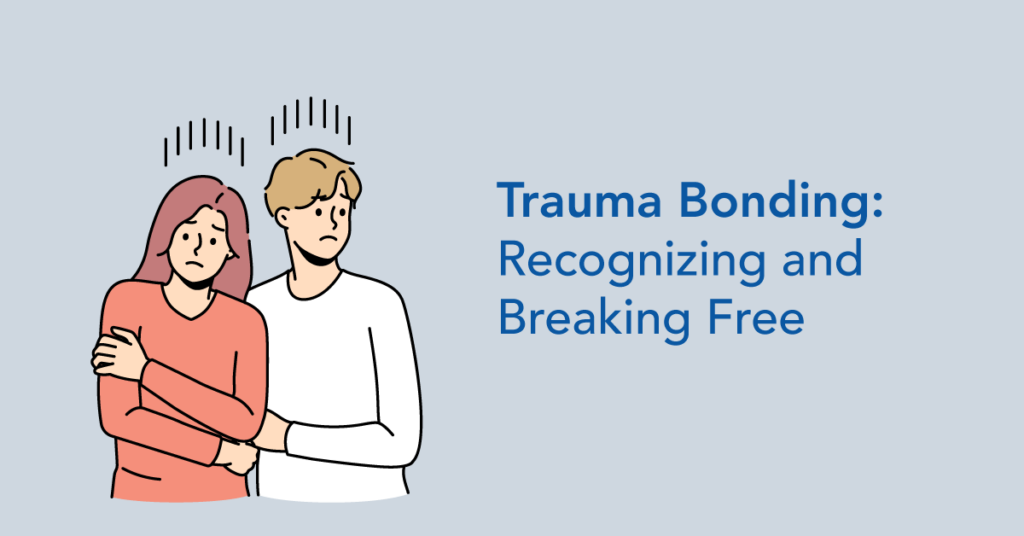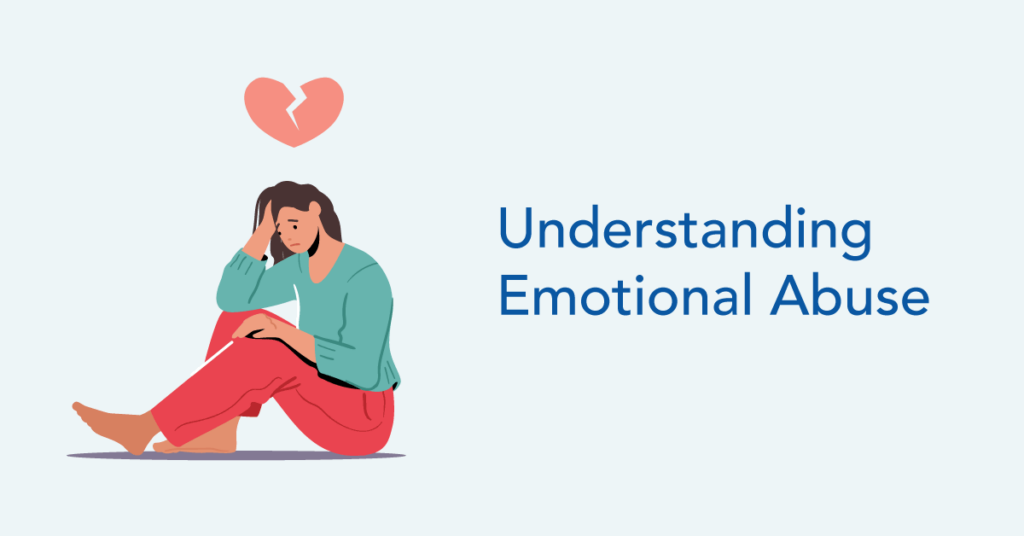Toxic trauma bonding ties victims to abusive partners:
Built on cycles of fear and affection
Creates confusion and emotional dependence
Healing involves safe separation and therapy
When people hear of toxic relationships, they often wonder why the person doesn’t just leave. If someone mistreats you, leaving seems so straightforward. But relationships and love can be much more complex than that. Many stay with an abusive partner because they’ve developed a trauma bond with their abuser.
Learn what trauma bonding is, the typical trauma bonding signs and how to break free of this harmful situation.
What Is Trauma Bonding?
Trauma bonding is when someone develops a strong emotional attachment to a person who abuses them. The abuse can be emotional, physical, psychological or sexual. This bond typically involves a repeated cycle of abuse, devaluation and positive reinforcement. The positivity brings the victim back to a place where they believe their abuser cares for them. Then it starts again. Some people use the phrase “trauma bonding” to refer to the experience when two people share a moment or develop a connection after sharing a personal trauma experience. But this isn’t the correct clinical definition of trauma bonding.Trauma Bonding Signs: What to Watch Out For
It’s often difficult for someone in a trauma bond to recognize what’s happening. The moments of positive reinforcement help them stay in denial and convince themselves their abuser genuinely cares for them. However, trauma bond relationships typically follow patterns and have some warning signs:- The abuse follows a repetitive cycle.
- The victim often makes up excuses for the abuser’s behavior.
- The victim lies to friends and family to cover up the abuse.
- The victim feels they can’t leave the relationship. In some situations, especially in the beginning, they don’t want to leave.
- The victim trusts their abuser despite everything that’s happened.
- The victim becomes convinced they’re at fault for the abuse.
- The abuser promises to change but doesn’t.
- The abuser uses control tactics on the victim, such as manipulation, love bombing and gaslighting.
- The abuser isolates the victim from others.
- The abuser convinces friends and family members they’re a good person.
- Love bombing
- Gaining trust
- Criticism
- Manipulation
- Resignation
- Distress
- Repetition
The Psychological Impact of Trauma Bonding
Trauma bonding allows a victim to rationalize the abuse they receive from someone in their life. The National Domestic Violence Hotline reports that trauma bonding survivors often remark that their abusive partner is “wonderful” 90% of the time; it’s just the other 10% that’s a challenge. But this is precisely how the abuser develops a trauma bond and convinces the person to stay. They apologize and say their abuse was a “slip-up,” and the positive behavior leaves the victim thinking they should stay. The psychological impact of trauma bonding can be dangerous. The victim may experience:- A loss of self-worth and self-esteem
- Psychological and emotional abuse
- Gaslighting that leads them to believe the abuse is their fault
- Confusion about what a healthy relationship should look like
- Isolation from friends and family
Steps to Break Free From Trauma Bonds
Breaking free from a trauma bond is possible. Often, after the repetitive abuse cycle continues long enough, the victim or their friends or family start to notice what’s happening. Once the victim understands they’re being abused, they can take steps to end the relationship and break free of the control. To break from a trauma bond successfully:- Educate yourself. As a victim, you likely have a lot of unlearning to do. You’ve been manipulated and may not truly understand the dynamic of your relationship. Learn about trauma bonds, including how abusers influence and control their victims.
- Get a support system. Lean on your support system. Friends and family can help you escape your abuser and offer advice as you take the next steps.
- Talk to a therapist. A counselor can be a beneficial resource throughout this process. They can help you confirm a trauma bond exists and answer any questions. They can also offer advice and support as you plan to leave your abuser. Once you’ve left the relationship, therapy helps you heal and move forward healthily.
- Make a plan beforehand. Abusers can be unpredictable and often don’t let a victim walk away easily. Victims have the best chance of a successful getaway by making a plan. Don’t give the abuser an opportunity to manipulate you into changing your mind or physically harm you for leaving.
- Go no-contact. If possible, avoid contact with your abuser. They brought you a lot of pain, and you don’t owe them a lasting connection. In some situations, no-contact may be impossible (such as if you share custody of children), in which case, limit contact as much as possible.
- Refocus on healthy bonds. Once you’re free from the toxic relationship, reprioritize the people you have a healthy bond with. Your abuser may have limited your contact with friends and family before, but it’s never too late to reach out and rebuild relationships.
- Give yourself time. You may not be okay right away. It takes work to regain your old self, but it will happen. Be easy on yourself as you go through your healing journey.
Find a Trauma Therapist Today With Mental Health Hotline
Your trauma bond can be broken, and you deserve to move on. It starts with getting the right help. Use Mental Health Hotline to find a trauma therapist. Our reputable mental health care providers operate nationwide and 24-7. Get started today.Editorial Team
-
 Written By: Mental Health Hotline
Written By: Mental Health HotlineMental Health Hotline provides free, confidential support for individuals navigating mental health challenges and treatment options. Our content is created by a team of advocates and writers dedicated to offering clear, compassionate, and stigma-free information to help you take the next step toward healing.


